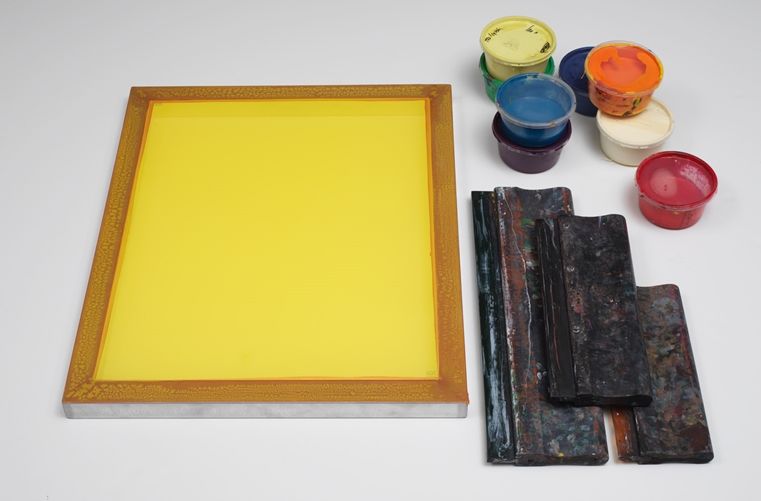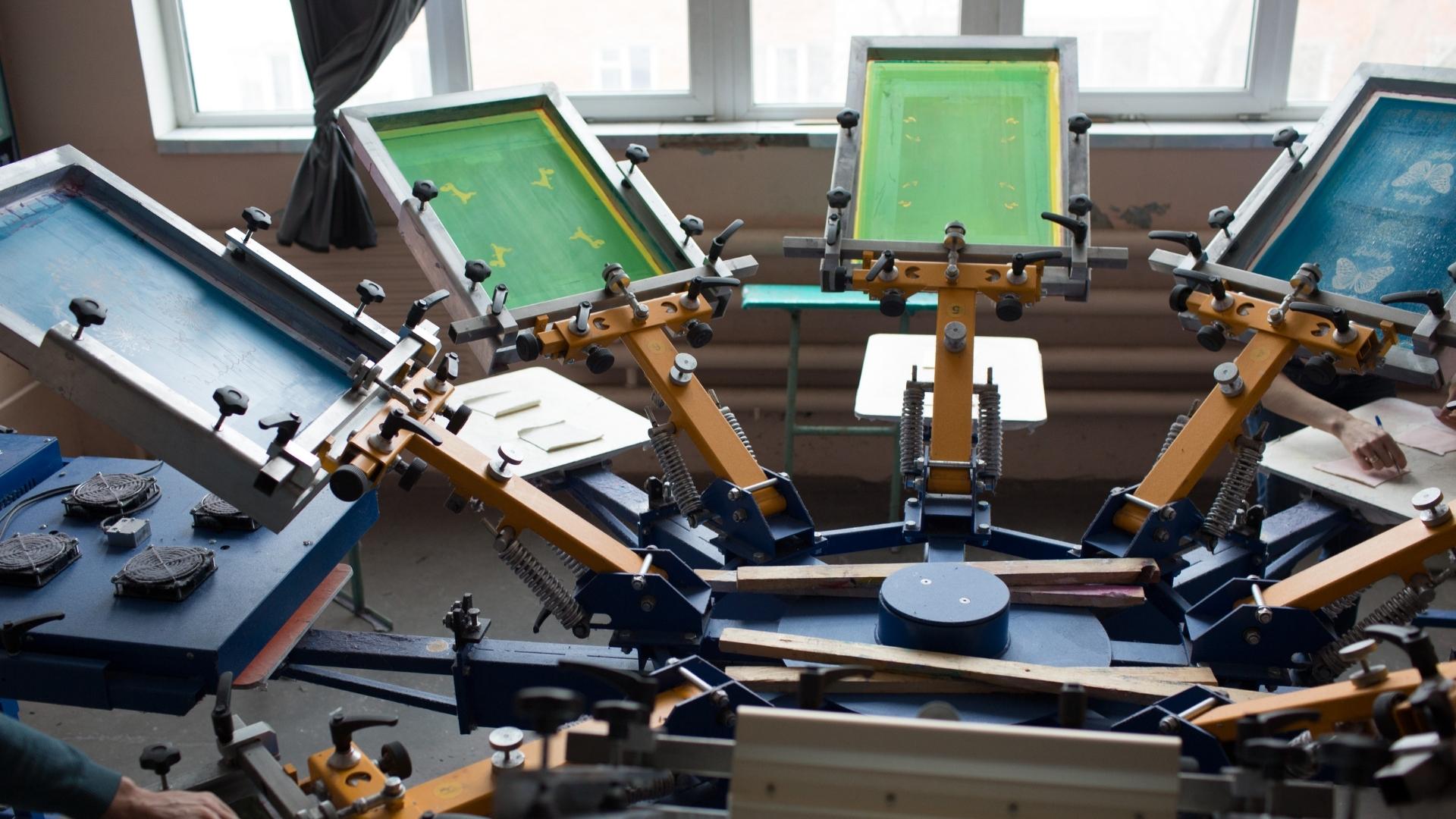The Necessary Guide to Understanding Screen Printing and Its Versatile Uses
Screen printing has a rich background that goes back to old times, developing into an innovative strategy made use of throughout various markets today. This guide discovers the complexities of the screen printing procedure, outlining its applications in home, style, and advertising decoration - 10:9 Design LLC Company. Recognizing these principles can open innovative capacity for both industrial and creative projects. The adhering to areas will disclose essential tips and techniques to improve one's screen printing ventures
The History of Screen Printing
Although screen printing has roots that trace back centuries, its evolution shows the imaginative and technological developments of different societies. Coming from ancient China, the strategy was at first used for enhancing fabrics and later spread to Japan, where it came to be indispensable to Ukiyo-e woodblock printing. The technique changed to Europe in the 18th century, where it obtained popularity among artisans and commercial printers. The development of photo solution in the 20th century revolutionized screen printing, permitting even more intricate layouts and greater effectiveness. Musicians like Andy Warhol even more pushed its appeal, utilizing the medium to develop famous works that blended commercialism and art. By the late 20th century, screen printing had developed itself as a versatile method, used in fashion, advertising, and art. Today, it proceeds to progress, incorporating digital modern technology and expanding its applications throughout numerous markets.
The Screen Printing Process Explained
Screen printing transforms creative visions right into concrete styles via a collection of precise actions. A picture is developed and after that transferred onto a screen, commonly made of fine mesh fabric stretched over a structure. A light-sensitive solution is related to the screen, which is subjected to light, solidifying in areas not covered by the picture. After cleaning out the unhardened solution, a pattern is created.
Next, the screen is put over the substratum, whether it be material, paper, or one more material. Ink is then pushed via the open locations of the pattern using a squeegee, transferring the style onto the substratum listed below. This process can be duplicated for numerous shades, requiring different displays for each and every tone. Finally, the printed item is cured using heat to guarantee the ink adheres effectively, causing a sturdy, vivid layout on-line.
Kinds Of Screen Printing Techniques

Furthermore, specialized strategies, such as discharge screen printing, get rid of color from the textile to create softer prints, while foil screen printing uses metal aluminum foil to achieve a shiny coating (10:9 Design reviews). Each strategy supplies distinctive attributes, accommodating different creative needs and production ranges, eventually increasing the opportunities within the screen printing domain name
Applications of Screen Printing in Numerous Industries

Additionally, the signage and marketing sectors use screen printing for creating appealing displays and banners. This method enables vibrant colors and elaborate styles that capture focus. In electronics, screen printing is employed for using conductive inks to motherboard, vital for component connections. Additionally, the home style market accepts screen printing to produce distinct designs on fabrics and wall art. In general, screen printing works as a crucial tool throughout varied fields, improving items with personalized and aesthetically enticing graphics.
Tips for Effective Screen Printing Projects
While carrying out a screen printing task, cautious focus to detail can significantly enhance the final end result. First, picking premium materials is necessary; this includes the screen, inks, and substrates. Making use of ideal mesh matters can affect ink deposition and information resolution. Preparation is similarly vital; detailed cleaning of screens and correct exposure times guarantee crisp prints.
Next, accurate registration is essential for multi-color prints. Using alignment tools can assist attain precise layering. Additionally, testing prints on scrap products before manufacturing helps determine possible issues without losing sources.

Frequently Asked Inquiries
What Products Are Best for Screen Printing on Textile?
Cotton and polyester blends are perfect for screen printing on textile due to their toughness and ink absorption. In addition, specialty fabrics like silk or canvas can generate unique textures and coatings, enhancing the overall design high quality.
Just how Do I Clean and Maintain Screen Printing Devices?
To maintain and clean up screen printing devices, one need to routinely wash screens with proper solvents, evaluate squeegees for wear, lubricate moving parts, and store all products in a completely dry, dust-free setting to prolong their life-span.
What Are the Ecological Influences of Screen Printing?
Screen printing can have significant environmental impacts, including chemical waste from inks and solvents, water use throughout cleansing procedures, and power usage. Eco-friendly products and lasting techniques are necessary for reducing these negative effects.
Can Screen Printing Be Done at Home Effectively?
Screen printing can be effectively done at home with the ideal products and methods. Hobbyists can produce top quality prints, though success depends on their ability degree, tools, and understanding of the procedure entailed.
What Are the Costs Related To Beginning a Display Printing Organization?

Starting a screen printing company includes prices for devices, materials, and workspace. First costs usually range from a few hundred to numerous thousand dollars, depending on the range, quality of equipment, and preferred production ability.
Screen printing has a rich background that dates back to old times, progressing into an advanced strategy utilized across various markets today. Another method, rotary screen printing, utilizes round screens, helping with continual printing on fabric rolls, thus boosting effectiveness for large productions. Furthermore, specialized methods, such as discharge screen printing, remove color from the fabric to develop softer prints, while foil screen printing applies metal aluminum foil to achieve a shiny coating. In the style industry, screen printing is widely utilized to produce vivid designs on apparel, making it possible for brands to showcase their special designs. Cotton here and polyester blends are optimal for screen printing on fabric due to their longevity and ink absorption.